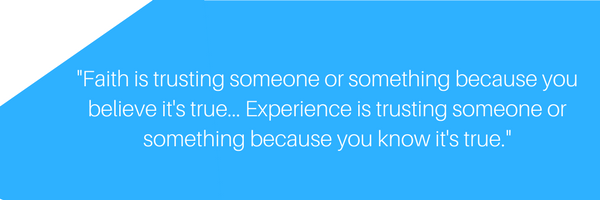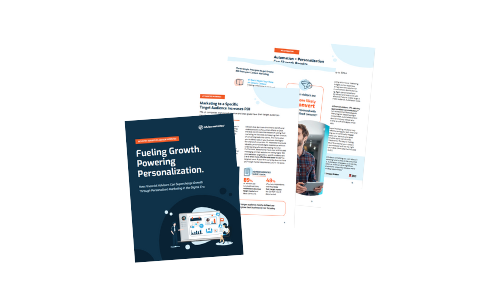The world is changing rapidly; it's becoming increasingly more connected and social. It's also changing the way consumers trust businesses. How can we build trust with consumers in today's digital landscape?
History of Consumer Trust
Let's start with a bit of history on how trust is becoming harder and harder to earn. According to MMG, consumers used to have absolute trust in institutions, with the three major players being the church, the state, and the monarchy. These three institutions took advantage of their absolute trust by creating laws that shaped society to their best interests. Eventually, brands began to emerge, which created differentiation and advertising. Internal secrets and scandals started to diminish the trust of institutions, and people began trusting brands more than institutions. One of the biggest institutional scandals in recent history, the 2008 banking crisis, created another shift of trust from institutions to brands. The 2008 banking crisis was also during the rapid rise of social media, allowing individuals to discuss the situation at a greater and more public scale.
Faith vs. Experience
However, trust is now declining in brands as well. According to Sanjay Nazerali, businesses can build trust with consumers in two ways: faith and experience. Faith is trusting someone or something because you believe it's true. For example, I believe what I read in the news because the news told me, not because I actually experienced it. Experience is trusting someone or something because you know it's true. For example, I trust you when you tell me this coffee tastes good, because I have the same type of coffee every morning.
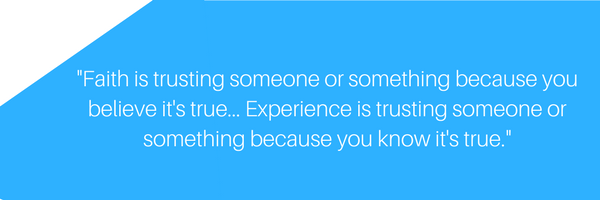
Previously, brands were able to gain trust with consumers purely based on faith. With today's digital landscape, trust is now shifting towards experience. The digital landscape is social and people are sharing their experiences everyday. Reviews, referrals, word of mouth, and influencers are the reason why people are trusting brands today, and this is creating a collective experience. The collective experience means that even though I didn't experience something for myself, my friend has and shared their experience online. Through my friend, I feel like I have experienced it myself. This collective experience is how today's consumers are trusting brands today.
Peer Trust
The collective experience has also resulted in the emergence of "peer trust." "Peer trust" is changing the way we do business, with companies like Airbnb and Uber being at the forefront of this shift in trust. Due to different scandals, like the 2008 banking crisis, even the financial services industry has been affected from this shift. Two digital companies have emerged within the "peer trust" financial services market: Lending Club and Prosper. Both companies operate similarly, using "peer-to-peer" lending to allow individuals to invest in other individuals.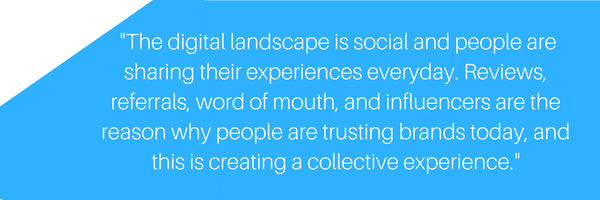
How can you build trust?
People trust other people. Consumers are looking for transparency and businesses can't hide behind brands anymore. Although the world is getting more technical, it is also getting more human. The human touch in the digital world is what people are yearning for, and it creates more sincere and sustainable relationships with consumers. So how do you build trust and encourage the collective experience in today's digital landscape?
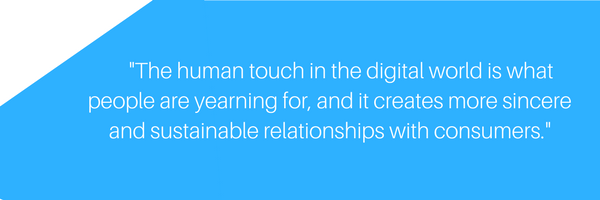
According to the Nielsen Report: Global Trust in Advertising and Brand Messages, the top 5 most trustworthy forms of advertising and promotion are:
- Recommendations from people I know
- Consumer opinions posted online
- Editorial content such as newspaper articles
- Branded websites
- E-mails I signed up for.
Take these five forms of advertising and use them to your advantage! Here are some more tips of what you can do to build trust within your consumer base:
- Use social proof: People want reassurance from other consumers or experts that they're making the right choice by choosing you. Notice that the top three forms of advertising in the Nielsen Report are social proof! This also connects to the idea of the collective experience. Ask your current clients to write reviews, recommendations, referrals, and rankings of you online
- Be authentic: Consumers are looking for originality and personality. Remember, businesses can't hide behind brands anymore, so show off your personality
- Provide relevant and quality content: Bring value to your consumers through your content marketing efforts. You want to show your clients that you're an expert at what you do, and having educational content is a great place to start. Advisor Websites offers a periodical content library that you can use to your advantage
- Communicate the consumer experience: Be consistent across all digital channels so your consumers understand the value you're offering. Your message should encourage the customer experience and reflect your brand promise.

.jpeg)
